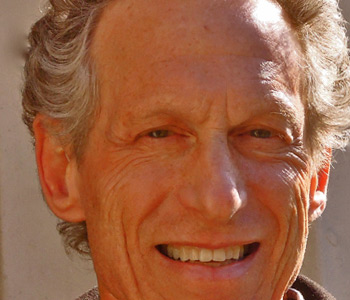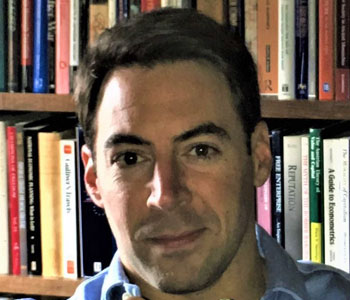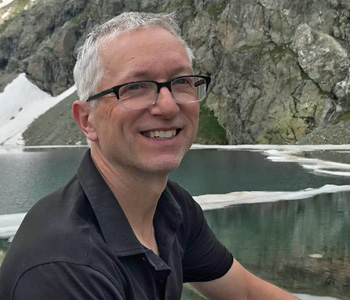Louise Shelley
Human Trafficking: A Global Perspective
Cambridge University Press
356 pages, 9 x 6 inches
ISBN 978 0521113816
ISBN 978 0521130875
There is more than one business model of human trafficking and there are enormous variations in human trafficking in different regions of the world. This book examines all forms of human trafficking in a global and comparative perspective.
Transnational crime is an important part of the rise in human trafficking as criminals are drawn by the enormous supply of people and the demand for cheap domestic servants, agricultural workers and laborers for dangerous industries.
The rise of sexual exploitation has been rapid and a truly global phenomenon, drawing increasing numbers of children and young women into this sphere. The growth of this crime has been very rapid because there is neither certainty nor severity of punishment. Unlike in the drug trade, criminal prosecutions for human trafficking are rare and profits are rarely confiscated.
Drawing on a wide body of academic research—actual prosecuted cases, diverse reports, and fieldwork and interviews I conducted over the last sixteen years in Asia, Latin America, Africa, and Europe—the book concludes that human trafficking will be a defining issue of the 20th century.
Human trafficking will grow as a result of economic and demographic inequalities in the world, the rise of conflicts, and possibly global climate change. Coordinated efforts of government, civil society, the business community, multilateral organizations, and the media are needed to stem its growth.

Human smuggling and trafficking have been among the fastest growing forms of transnational crime—because current world conditions have created increased imbalances of demand and supply. Imbalances of supply and demand have created a flourishing business for traffickers.
Human smuggling and trafficking have been among the fastest growing forms of transnational crime—because current world conditions have created increased imbalances of demand and supply. In addition, migration flows are enormous and this illicit trade is hidden within the massive movement of people.
The supply of people that are trafficked exists because globalization has caused increasing economic and demographic disparities between the developing and developed world, along with the feminization of poverty and the marginalization of many rural communities. Globalized corruption has stripped many developing countries of much of their national treasuries, depriving citizens of education and social benefits and development capital.
Trafficking has expanded because the transportation infrastructure is there and transportation costs have declined. The tremendous growth of tourism has also enabled pedophiles to travel and many to engage in sex tourism.
The end of the Cold War resulted in the rise of regional conflicts and the decline of borders, leading to an increased number of economic and political refugees. Furthermore, many rebel groups turned to illicit activity, including human trafficking, to fund their military actions and obtain soldiers. Demand has also increased as producers depend more on trafficked and exploited labor to stay competitive in a global economy in which consumers seek cheap goods and services, including easily available and accessible sexual services.
Imbalances of supply and demand have created a flourishing business for traffickers.
Traffickers choose to trade in humans because there are low start-up costs, minimal risks, high profits, and large demand. For organized crime groups, human beings have one added advantage over drugs: they can be sold repeatedly. In drug trafficking organizations, profits flow to the top of the organization. With the small-scale entrepreneurship that characterizes much of human trafficking, however, more profits go to individual criminals making this trade more attractive for all involved.
Human smugglers and traffickers are not always motivated exclusively by profit. Some consciously engage in this activity to fund a terrorist group, a guerilla movement, or an insurgency. Others trade in people to provide suicide bombers.
Everywhere in the world, the consequences of trafficking are devastating for its victims and larger communities. Those victimized in this open slave market were not only the young women destined for sexual slavery. All of society suffers from such victimization. Other casualties include the principles of a democratic society, the rule of law, and respect for human rights. The degradation of the women in full view of the public deals a direct blow to the rights of women and to gender equality. The full costs of human trafficking, however, will be evident only in coming decades.
Transnational crime was once synonymous with the drug trade. Yet trafficking in persons is now perpetrated on such a large scale that it is a prime activity of many transnational crime groups. According to 2005 data of the International Labour Organization, 12.3 million people worldwide are in forced bonded labor, child labor, and sexual servitude.
Pages 112-138 are on the business of human trafficking.
Organized crime, like all businesses is focused on making a profit, ensuring supply, and meeting demand. What sets an organized crime business apart is that violence and corruption are innate to its business operations. Human trafficking is very much part of organized crime because the criminals who traffic people rely on coercion, deception, corruption, and brute force at every stage of the business. Human trafficking businesses worldwide share these common features. Yet analyses of international business and trade reveal that there are great variations in the business practices of entrepreneurs in different regions of the world.
These economic comparisons are very relevant to this analysis of human trafficking. The illicit trade in humans mirrors the legitimate economy. Chinese human traffickers treat their business as a form of trade and a means of generating capital for economic development. Groups from the Soviet successor states treat the trade in women as an exploitable natural resource, such as oil, gas, and timber that is sold without regard to the future. American pimps who trade in women consume almost all their profits and engage in conspicuous consumption.
Distinctive regional differences in trafficking are not a contemporary phenomenon. In the past, there was no single model of slavery. Slavery was different in the American colonies, Brazil, and the Horn of Africa. Just as the trade in humans was shaped in the past by cultural, geographic, and economic forces, today’s human trafficking is also shaped by these forces as well as historical traditions.
Some groups specialize in human trafficking whereas others commit diverse crimes simultaneously. Some make more use of corruption and technology, others exploit the absence of effective state controls in their home country. Still other traffickers use underground banking or commodities to launder their money. These distinctions are essential in understanding the business operations of human trafficking groups in different regions of the world.
Understanding the nature of the organization is not an intellectual construct. It is essential if there is to be success in combating human trafficking. As the great anti-mafia judge Giovanni Falcone explained, he was able to combat La Cosa Nostra in Sicily only when he profoundly understood its nature.
Unfortunately, Falcone’s understanding of the mafia is not very helpful to the counter-trafficking effort because the mafia has made its money primarily in other areas of criminal activity. Yet his insight that one must understand the tradition, cultures, and norms of a criminal group in order to effectively fight them should be at the core of any rational policies to counter the business of human trafficking.

There was no single model of slavery. Slavery was different in the American colonies, Brazil, and the Horn of Africa. Just as the trade in humans was shaped in the past by cultural, geographic, and economic forces, today’s human trafficking is also shaped by these forces as well as historical traditions.
Contemporary trafficking is much more diverse and complex than the white slave trade of the late 19th and early 20th century. It cannot be stopped or appreciably slowed by the worldwide economic slowdown that began in 2008. Today’s trafficking is truly global. Every country of the world is part of the problem and the flows of people are much more difficult to chart than the unidirectional white slave trade whose victims flowed from Europe to North and South America. Moreover, many countries in the world today are simultaneously source, transit, and destination countries for human trafficking.
Despite the disproportionate attention to sex trafficking today, contemporary trafficking victims are more likely to be victims of labor trafficking, forced to serve as child soldiers, or trapped in domestic servitude. Although victimization is still disproportionately female, as was trafficking in the 1930s, children and minors today make up a significant share of victims both in the developing world and in the sex markets in the United States. And they are increasingly visible in streets in some Western European countries.
The Russian meltdown in the late 1980s and the Asian economic crisis that subsequently crippled Asian economies affected trafficking in diverse ways. Yet the crises were regional; many parts of the world remained largely untouched. There was still a strong demand for trafficked people in other parts of the world. Women impoverished by the crisis in Russia and desperate families in Asia sold their children into prostitution to pay debts or to ensure the survival of the rest of the family. Trafficked women could still easily be sold in European markets largely unaffected by the crisis. Sex tourism continued in Asia where the availability of victims merely made trafficked women and children more accessible.
The impact of the economic crisis on labor trafficking was more complex and long lasting. The crisis reduced economic output and therefore the immediate demand for labor, both trafficked and free. Only in the early 21st century did the human costs of the crisis of the late 1990s become more apparent. Individuals who incurred debt during this crisis and could not repay were subsequently forced into involuntary servitude or sold their children to settle these accounts. Children who were pulled out of schools by parents during the crisis often labored on family farms. Ignorant and ill prepared for the workforce, these children as teenagers and young adults became victims of labor trafficking. Therefore, the full impact of economic crises may be delayed, the consequences apparent only years later.
Human trafficking will remain a defining problem of the 21st century as the Cold War was in the 20th century and Colonialism in the 19th.




We don't put paywalls. We don't distract you with ads. We don't sell your data.
Please help to keep this running!